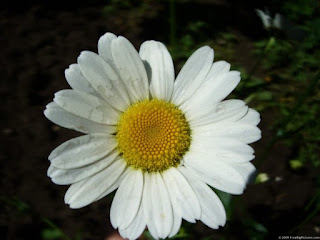BELLIS PERENNIS-A REMEDY FOR MUSCLES AND BLOOD VESSELS
Botanical
name—Bellis
perennis Linn
Family—Compositae
Common
names—English—English Daisy; French-La paquerette; German-
Maslieben
Distribution
–
It is native to Europe, and western Asia and introduced in north and south
Africa, Now it is distributed throughout
world
Description-A
perennial herb upto 1m in height. Leaves forming a basal tuft , spathulate or
obovate, 2.5 cm long, narrowed into margined petioles, slightly toothed,
pubescent, mid-rib broad. Inflorescence a head. Heads solitary, 2.5 to 5 cm
across on hairy peduncles; involucral bracts oblong, obtuse hairy; rays
numerous, linear, white or rosy, wholly or partly red and often incurved or
relaxed or quilled. Rootstock short, fibrous and stout.
Part
used—Whole
plant.
Chemical
constituents—Constituents include triterpenoidsaponins,
several anthocyanins, flavonoids and polyacetylenes.
Traditional
use—
The flowers and young leaves were used as a vegetable . The plants was used traditionally as an expectorant,
diuretic , anti –inflammatory, antipyretic , vulnerary, antispasmodic,
astringent, pothalmic, homeostatic. It was also used in the treatment of common
cold , stomachache, eye diseases, eczema, skin boils, gastritis, enteritis,
diarrhea, bleeding, rheumatism, inflammation and infection of the upper
respiratory tract.
HOMOEOPATHIC USES
Bellis perennis is
mentioned in Homoeopathic literature in 1858 by Dr. Henry Thomas. Mentioned in
British journal of Homoeopathy XVI , 324; Allen’s Encyclopedia of Materia Medica
Vol 11, 128
Dr Burnett is the chief
authority for its Homoeopathic uses. Burnette says-It is a princely remedy for
old laborers , especially gardeners.
 Bellis perennis acts upon
the muscular fibers of the blood vessels. Great muscular aches and soreness.
Lameness of joints as is sprained. Venous congestion due to mechanical causes.
Bellis perennis is the first remedy in injuries to the deeper tissues after
major surgical shocks. It is useful in deep trauma or skeptical wounds to the
internal organs after major surgical operations. An excellent remedy for sprains and bruises. It
is effective for tumors or cysts after injuries.
Bellis perennis acts upon
the muscular fibers of the blood vessels. Great muscular aches and soreness.
Lameness of joints as is sprained. Venous congestion due to mechanical causes.
Bellis perennis is the first remedy in injuries to the deeper tissues after
major surgical shocks. It is useful in deep trauma or skeptical wounds to the
internal organs after major surgical operations. An excellent remedy for sprains and bruises. It
is effective for tumors or cysts after injuries.
Trauma of the pelvic
organs from kicks, blows and surgery. Sore, bruised feeling in the pelvic
region, worse since childbirth.
Hemorrhages. A major remedy for venous stasis. Swelling due
to venous stasis. Bellis affects the blood vessels causing venous stasis and
varicose veins. Varicose veins with
bruised sore feeling.
Boils with itching and
burning sensation. Also good for acne, red papiles and blisters.
Effective for railway
spine. Falls on coccyx. Pain in inner side of the forearm, as if a boil
developing. Pain in middle finger of left hand , as if a gathering for a short
time only.
Prescribed
dose—Mother
tincture to third potency.





Comments
Post a Comment